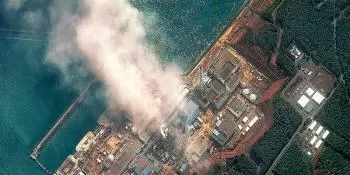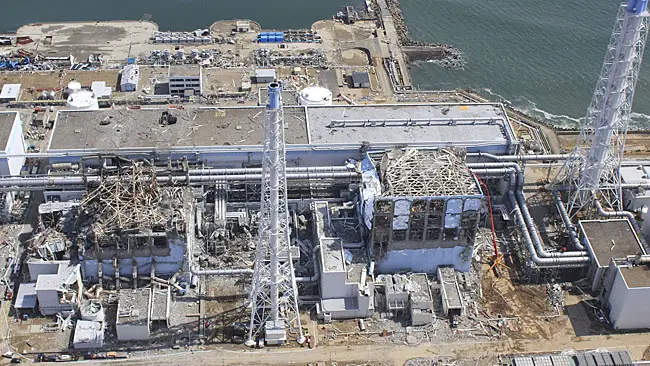
The Fukushima Dai-ichi nuclear accident is a series of incidents, including four separate explosions, that took place at the Naraha nuclear plant in Fukushima Prefecture, Japan, following the Tōhoku earthquake and tsunami of March 11, 2011. The Fukushima nuclear facility was a nuclear power plant to generate electricity.
The Fukushima nuclear disaster occurred on March 11, 2011.
What were the causes of the Fukushima I accident?
The accident originated in a magnitude 8.9 earthquake near the northwest coast of Japan. Nuclear reactors 1, 2 and 3 were automatically shut down at the time of the earthquake, while the remaining three reactors at the nuclear plant were already shut down for maintenance.
As a result of the earthquake, a 14-meter-high tsunami occurred in the Pacific Ocean. The tsunami flooded the six units located on the seashore, damaging the electricity grid and emergency generators, preventing the operation of the refrigeration systems.
After the earthquake, the Fukushima reactors that were still operating shut down automatically. To cool the reactors, in this type of nuclear power plant, electrical energy is needed, generally from the network, but due to the earthquake the electrical network was not working.
Nuclear safety systems foresaw such a situation and that is why they had diesel electric generators. However, the diesel engines also broke down at 3:41 p.m. when the tsunami hit. At this time, the reactor core cooling problems begin with the risk of core meltdown.
Later the fusion of the nucleus of reactors 1, 2 and 3 is confirmed.
Aftermath of the tsunami at the Fukushima Daiichi nuclear power plant
As a result of the deficient cooling of the reactors, the nuclear power plant suffered from the day after the earthquake, several explosions. Multiple fires broke out in reactor 4. In addition, in some plants the spent fuel stored in the spent nuclear fuel pools began to overheat due to the evaporation of the water in those pools.
 Fear of nuclear radiation leaks led Japanese authorities to first evacuate a twenty-kilometer radius around the plant. Later this radius was gradually expanded to 40km. Workers at the plant were exposed to nuclear radiation on several occasions and were temporarily evacuated at different times.
Fear of nuclear radiation leaks led Japanese authorities to first evacuate a twenty-kilometer radius around the plant. Later this radius was gradually expanded to 40km. Workers at the plant were exposed to nuclear radiation on several occasions and were temporarily evacuated at different times.
Evacuation of the population
On the day of the disaster, all residents within a 3 km radius of the plant had to leave their homes. The following day, the perimeter was extended to 20 km: 170,000 people had to leave the area.
March 12-15, 2011: Namie City residents were evacuated by local officials to a site west of the city. It later turned out that the evacuees had spent three days in an area where the radioactive cloud had moved directly.
April 11, 2011: The Japanese government announced that it would further expand the evacuation zone from 20 km to 30 km, which happened in the following days.
April 21, 2011: The 20-kilometer zone was declared a no-go zone by the Japanese government. The 80,000 former residents were allowed a short stay to collect their personal belongings.
May 10, 2011: For the first time, one hundred residents of a village in a 30 km evacuation zone around the power plant were allowed to visit their homes to collect their personal belongings.
May 12, 2011: The livestock still present in the evacuation zone would be slaughtered.
About a year after the nuclear disaster: Some of the residents living in the outer ring of the evacuation area were allowed to return to their homes.
What are the health consequences of the Fukushima I accident today?
Since the Fukushima I nuclear accident, the Japanese government has invested millions of euros to recover the accident area. After ten years, the government announced that it was continuing to investigate the possible health effects that the radioactivity released during the accident could have on the resident population of the area.
At the same time, the United Nations has published a report 10 years later in which it indicates that there is no evidence that could link the release of radioactive particles with the increase in thyroid cancer cases that appeared in the younger population in the area.
The published report was written by the UN Scientific Committee on the Effects of Atomic Radiation (Unscear). This report links the growth of thyroid cancer cases to improved detection methods. According to the UN, possibly in the past there were the same cases but they were not detected.
In 2017, the Japanese government commissioned a study to investigate the relationship between thyroid cancer and radioactivity and came to a similar conclusion.
In July 2020, the UK was the first country to sell Fukushima rice again.
In April 2021, the Japanese government decided to dump one million tons of polluted water into the sea.
Classification of the Fukushima nuclear accident
Following the parameters of the INES scale that classifies the severity of nuclear accidents, the Fukushima nuclear disaster reached level 7, the highest possible level.
Initially, the accident was considered level 4 on the INES scale. However, the events of the following days aggravated the situation and the level increased until it reached level 7.
Level 7 of the INES scale is the same level at which the Chernobyl nuclear accident, the worst accident in the history of nuclear energy, was classified. Although in the case of Chernobyl, the consequences were even worse than in the case of Fukushima.